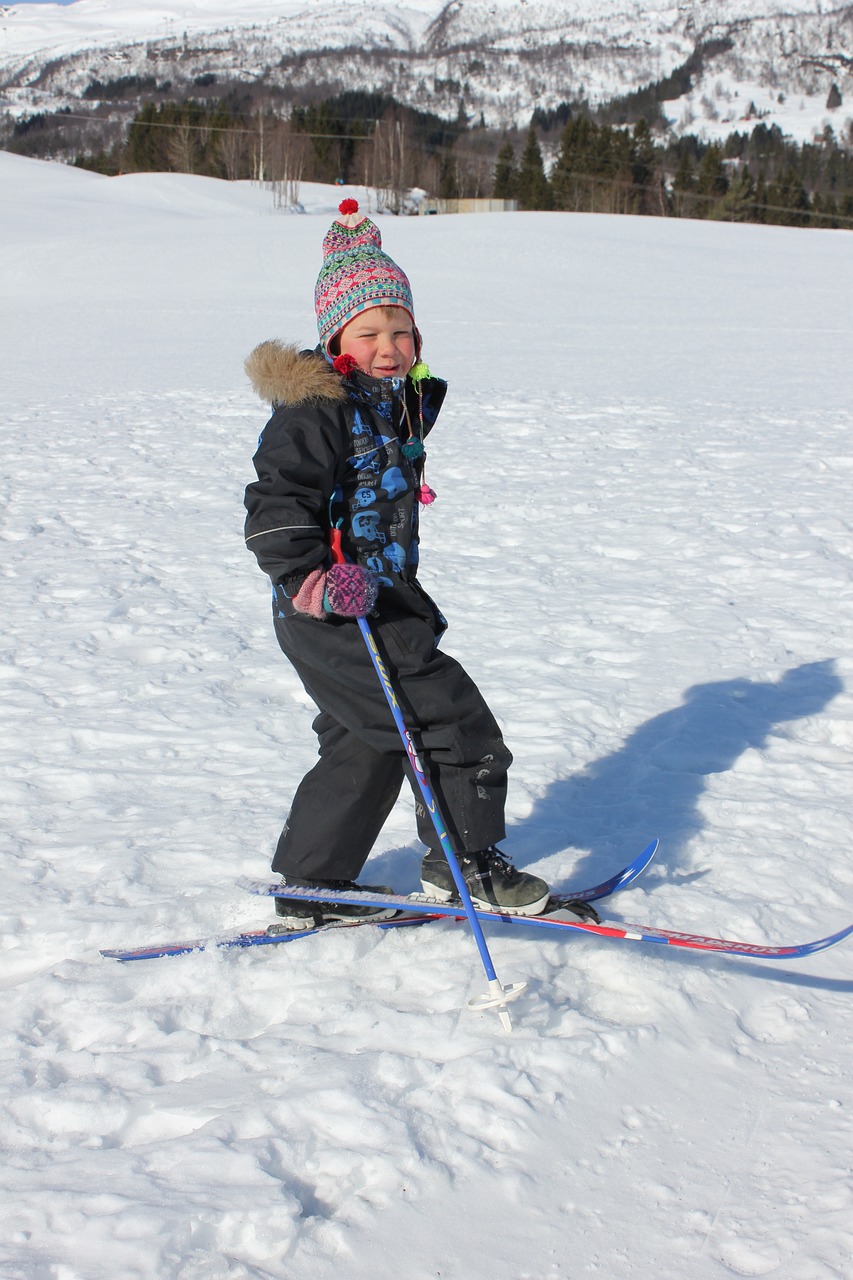What To Wear Cross Country Skiing

Cross country skiing is an enjoyable winter activity that can be enjoyed by all ages and athletic abilities. Whether you’re a beginner or a seasoned pro, it’s important to make sure you’re dressed appropriately for the elements. The right clothing and gear can make all the difference when it comes to your comfort and performance on the slopes. In this article, we’ll cover what to wear cross country skiing so you can stay warm, dry, and comfortable throughout your journey.When it comes to cross country skiing, the right clothing and gear can make all the difference in how enjoyable your experience is. To ensure you stay warm and dry, you should dress in layers. Start with a base layer of breathable, lightweight materials such as merino wool or synthetic layers that will wick away moisture. On top of that, add a mid-layer such as a fleece or wool sweater for warmth and breathability. Finally, top it off with an outer layer like a waterproof shell or softshell jacket to protect you from wind and snow. Also make sure to wear waterproof or water-resistant pants to keep the snow out. Accessories like gloves, hats, neck gaiters, and balaclavas are also essential for keeping warm and comfortable. Don’t forget about your feet! Make sure to wear waterproof boots that are insulated for warmth. Additionally, bring along an extra pair of socks just in case your feet get wet while skiing.
Cross Country Skiing Clothing
Cross country skiing requires specific types of clothing to keep skiers warm and dry while they are outdoors. All of the necessary clothing for cross country skiing will depend on the climate and weather conditions, but some basic items are essential for any ski trip. Layering is key, so having a few different types of clothing can help regulate body temperature while out on the slopes. The main items of clothing to consider for cross country skiing include: base layers, mid layers, outer layers, hats and gloves, and waterproof pants and jackets.
Base Layers
The base layer is the closest layer to your skin and should be made from a fabric that provides warmth while also wicking away moisture from your body. Merino wool is a popular choice for base layers as it is lightweight yet offers insulation in cold temperatures. Polyester and synthetic materials are also ideal for base layers as they are lightweight but still provide warmth. Base layers should fit snugly against your body and be breathable to help keep you dry during exercise.
Mid Layers
The mid layer is designed to provide an additional level of insulation from the cold. This layer can be made from fleece or wool materials which offer more warmth than the base layer while still remaining breathable. The mid layer should fit loosely over your base layer, allowing air to circulate around your body.
Outer Layers
The outer layer is designed to protect you from wind and rain while out on the slopes. This should be waterproof yet breathable so that you don’t get too hot while still staying dry in wet conditions. A good quality waterproof jacket or pants will also help keep you warm in cold temperatures.
Hats and Gloves
Hats are essential for keeping your head warm when out on the slopes, as heat can quickly escape through your head when it’s cold outside. Fleece or wool hats are great options as they provide additional insulation against the cold air without making you too hot during exercise. Gloves are also important for keeping your hands warm in cold temperatures; mittens with liners are particularly good as they provide extra warmth than regular gloves.
Waterproof Pants and Jackets
Waterproof pants and jackets will ensure that you stay dry when out on the slopes in wet conditions. Look for a jacket with a hood that fits snugly around your face so that no water can get inside; waterproof pants should fit snugly around your legs to prevent any water getting in at the ankles.
All these items of clothing will help keep you warm during cross country skiing trips, helping you enjoy every minute out on the slopes!
Boots and Socks for Cross Country Skiing
Choosing the right boots and socks for cross country skiing is essential to maximize comfort and performance. Ski boots should fit snugly, with just enough room that your toes can move slightly. Make sure that the heel does not slip up and down when you move your feet. Cross country ski socks should be breathable, lightweight, and provide insulation to keep your feet warm in cold temperatures. Merino wool is a great choice for moisture-wicking, breathable materials. Make sure to select a sock that fits comfortably without bunching or pinching in any areas – it should lay flat against your foot. When trying on boots for cross country skiing, always bring along the socks you plan to wear with them. This will ensure the best fit possible when you hit the slopes!
When selecting ski boots, comfort is key. You want a boot that fits snugly while still providing enough room for your toes to wiggle freely. The right fit will also help you perform better on the slopes – an uncomfortable boot can lead to fatigue and poor performance over time. Additionally, look for boots with good ankle support – this helps prevent any sprains or injuries while skiing. Consider what type of terrain you will be skiing on as well – if you’ll be tackling steeper slopes or more rugged terrain, opt for a higher-end boot designed specifically for those conditions.
Socks are just as important as boots when it comes to cross country skiing comfort and performance. Look for a sock that fits comfortably without bunching or pinching anywhere on your foot. Merino wool is an excellent choice – it’s lightweight, breathable, and provides excellent insulation in colder temperatures. Avoid cotton socks whenever possible – they will absorb sweat and moisture from your feet, leading to cold temperatures quickly setting in.
Cross country skiing can be an incredibly enjoyable outdoor activity – but make sure you have the right equipment! Investing in quality boots and socks can make all the difference in terms of comfort and performance on the slopes. With a little bit of research, you can find the perfect pair of boots and socks to keep your feet comfortable all day long!

Thermal Undergarments for Cross Country Skiing
Cross country skiing is an outdoor activity that requires the right gear. Thermal undergarments are essential for staying warm and comfortable during a long ski trip. They help keep the body warm and provide extra insulation to prevent cold air from entering. Thermal undergarments have been designed specifically for cross country skiing, with materials that are lightweight and breathable, allowing for maximum performance while keeping you comfortable.
Thermal undergarments come in a variety of styles, such as long johns, thermal tights, or thermal tops. Long johns provide a tight fit that helps to trap in body heat while still allowing plenty of flexibility for movement. Thermal tights are great for intense skiing activities, as they provide an extra layer of warmth without hindering mobility. Thermal tops can be worn with or without other layers, depending on the weather conditions and the level of activity you’ll be doing.
When selecting thermal undergarments for cross country skiing, it’s important to consider both comfort and performance. Look for fabrics that wick away moisture quickly and efficiently to keep you dry and warm even when sweating heavily during long ski trips. The material should also be breathable enough to allow air circulation so your skin won’t overheat during strenuous activities. Additionally, look for garments with features such as flatlock seams which prevent chafing while offering maximum flexibility and comfort.
High-quality thermal undergarments are a must-have accessory for cross country skiing trips. Not only do they provide warmth and insulation in cold conditions, but they also help keep your body dry so you can stay comfortable and perform at your peak level all day long. When shopping for thermal undergarments, look for garments made from lightweight yet durable fabrics with features such as flatlock seams that will ensure maximum comfort and flexibility without compromising performance.
Outer Layer for Cross Country Skiing
The outer layer of clothing for cross country skiing is an important factor in keeping you warm and comfortable while skiing. It should be waterproof, windproof, breathable, and lightweight. A good outer layer should also be able to wick away moisture to keep you dry and comfortable. There are a variety of materials used for the outer layer of clothing, such as Gore-Tex, nylon, polyester, and wool.
Gore-Tex is a popular choice for cross country skiing due to its waterproofness and breathability. It is lightweight yet durable enough to withstand wear and tear from frequent use. Nylon is also a good choice as it is lightweight, durable, and water-resistant. Polyester is another option that provides warmth without adding much weight, while wool provides extra insulation in cold temperatures.
When choosing an outer layer for cross country skiing it is important to consider the weather conditions you will encounter on your ski trip. If you are skiing in cold temperatures or inclement weather, then a thicker material such as Gore-Tex or wool would be best suited for your needs. For warmer days or mild climates then a lighter material such as nylon or polyester might be more suitable. Additionally, it’s important to make sure the outer layer has enough pockets to store your essential items like snacks or a phone.
No matter what kind of outer layer you choose for cross country skiing it’s important that it fits well and keeps you warm and comfortable while out on the slopes. With a good quality outer layer you can enjoy your time out on the trails without worrying about being cold or wet!
Goggles and Sunscreen for Cross Country Skiing
Cross country skiing is a great way to get outdoors and experience the beauty of nature. However, it can be dangerous if you don’t have the right gear. Goggles and sunscreen are essential for protecting your eyes and skin from the sun’s harmful rays while out on the trails. Goggles protect your eyes from wind, snow, and debris that could otherwise cause injury or irritation. The right pair of goggles should be comfortable, fit snugly around your face, and provide good visibility. Sunscreen is also important to protect your skin from UV radiation, which can lead to sunburns and other skin damage. Make sure to use a broad-spectrum sunscreen with an SPF of at least 30 that is waterproof and sweat-resistant.
When selecting goggles for cross country skiing, look for ones that are designed specifically for winter sports. They should have lenses with anti-fog coating so you won’t have to worry about them fogging up while you’re out on the trails. Additionally, look for goggles that offer good ventilation so that your eyes don’t get too warm while skiing in cold temperatures. Finally, make sure they fit well – if they’re too tight or loose they won’t provide adequate protection from wind or debris.
In addition to goggles, make sure you always wear sunscreen when cross country skiing. Choose a sunscreen with an SPF of at least 30 that is broad-spectrum (provides protection from both UVA and UVB rays) as well as waterproof and sweat resistant so it won’t come off during activity. Apply sunscreen liberally before heading outside – don’t forget about your ears, lips, nose, scalp, hands, feet, arms and legs – these areas are often forgotten but can still get burned if not protected properly.
Goggles and sunscreen are essential pieces of gear when it comes to protecting yourself while out on the cross country ski trails. Invest in a quality pair of goggles that fit snugly around your face and provide good visibility as well as proper ventilation; don’t forget to use a broad-spectrum sunscreen with an SPF of at least 30 before heading out! With these two items in hand you’ll be ready to enjoy all that cross country skiing has to offer without putting yourself in danger of sunburns or eye injury.

Conclusion
Cross country skiing is an exciting winter sport that can be enjoyed by people of all ages and abilities. Whether you’re a novice or an experienced skier, dressing appropriately for the sport is essential for keeping comfortable and having fun. The key items to consider when choosing clothing to wear cross country skiing are layers, insulation, breathability, waterproofing, and fit. Layering allows for flexibility in adjusting your clothing based on the conditions. Insulated fabric provides warmth and breathability helps regulate body temperature. Waterproof materials prevent moisture from soaking through to your base layer, while a snug fit keeps everything in place. With the right clothing choices, you’ll be prepared to tackle any terrain and take your cross country skiing experience to a whole new level!
